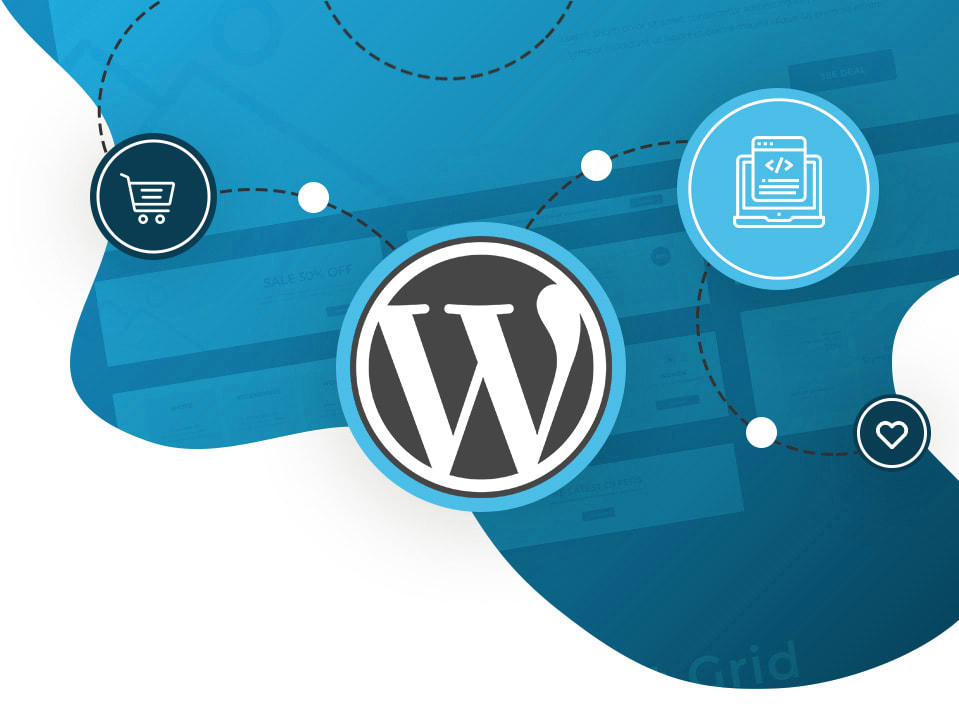Websites are a must for any successful or well-known business. For example, you can think of a large brand, corporation, or clothing company. Google their name. You’re likely to have a website. This is their online business face. This face is crucial to business success in a world where people are more active online than offline.
A business website can serve many purposes. It provides information about your products and services to potential buyers. The location of your stores. You can also communicate to the market about the latest marketing campaigns. Source: The average small business revenue is $ 3.6 million, while the average small business revenue is $5.03 million. Your clients need a website to stay afloat.
But, it’s not easy to set up a website for a business from scratch. This is true even for web design Chicago agencies. So, we have compiled a list of 10 steps to help you answer the question, “How to set up a website for small business”!
Important Steps to Create a Website for Small Business:

1. Domain Registration and Selection:
A domain name registration can help increase the credibility of your website online. Your domain name can also help you build your brand identity. Your domain is your internet street address. Without a domain, you won’t be able to get visitors or build a website. Good domain names are the first step in building brand trust, resulting in higher conversions (sales).
Registering all related domain extensions, such as.net,.org is a good idea when registering your primary domain. This will help protect your brand identity against other parties trying to copy it.
2. Select A Trusted Hosting Provider:
You will need to buy a domain name for your site. Then you will need a hosting provider to host it. Hosting is what places your website on the internet. Is your website file available for anyone to view? Hosting service providers will provide you with a virtual space for uploading your files and bandwidth to load your website each time a visitor visits your site.
3. Get a Content Management System that is great:
Many web design Chicago agencies may wonder what content management software (CMS) is. A CMS is a web-based application that allows you to create, edit, and manage digital content. Although each CMS has unique features, most will offer web-based publishing, content management, media library, and usage and plugins/addons. A CMS is a foundation for creating a website and publishing content.
4. WordPress can be your CMS:
Okay, now, which CMS should you use? This is a great question but it cannot be easy to answer. While you only need one CMS to start, many others exist. There are WordPress, Joomla, and Drupal, Wix. Weebly, Medium, Tumblr, and Wix.
WordPress is our recommendation. WordPress is used by 74.6 million sites (ManageWP). WordPress is often considered one of the most popular CMS options. Both the Vendasta blog and the main website are hosted on WordPress! It’s very simple to use, which is crucial if you don’t have the technical skills to build websites or need to create websites quickly for clients. WordPress website management is easy to learn. You’ll soon get used to the interface and be able to make quick changes to clients’ websites.
5. Strategize Your Content:
Once you have the domain name and systems, you can begin designing your website. You will first need to decide what content you want to include on your website. Imagine a website overloaded with information and paragraphs upon pages of text. How would that make you feel? Are you feeling bored or even headachey? This is the point.
Your website should not only include information about your business. Although it’s called a small website for businesses, you need to know that it should be smaller and more user-friendly.
6. Add your business philosophy, value, and mission:
Your brand name and logo are not the only things that distinguish you from the rest. Your mission and core values can also differentiate you from the competition. What is your brand’s purpose? This is the “heart” of your business. It’s what customers can relate to and become brand advocates.
Your business values and mission can help you develop your brand identity. But, again, this is a branding issue and will impact how the market perceives you. For example, do you see yourself as a supplier of high-quality products in the industry? Or is your focus on the lower end of the spectrum, and the product has low costs? Are you bold enough to claim that you can satisfy all?
7. Create Your Website:
This is your chance to unleash your inner designer (or hired artist). This is your chance to use your creative talents and design the website. Creativity is what we’re referring to. There is no set formula for creating beautiful websites that appeal to your target audience. Why not? Beauty is subjective. According to a web design company in Chicago, 75% of website credibility can be attributed to the site’s overall design.
You will need to understand that the website’s primary purpose is not to showcase your artistic talents but to provide information about the business to the public. Unless your business is in fashion or design, a well-designed website will help you to inspire confidence in your abilities.
8. Avoiding Technical Errors:
It can be difficult if you’re a beginner, but avoiding any technical mistakes with your website is crucial. If viewers cannot find the page they want or encounter technical problems while browsing your business’ offerings, they will leave your website.
9. Avoiding Errors – Clerical Errors:
Clerical errors, which can include typos, spelling, and grammatical mistakes, are another silly error. This means that both the website creator and the business are not willing to take the time to edit or proofread the content. If this is true, how can you convince them to pay attention and cater to their needs? You will also be perceived as an unprofessional business, and your brand will suffer. These errors are essential.
10. Complete Website Setup and Launch:
You’re correct. Now we are at the last step: launch your website! Make sure you go through your website multiple times before making it public. This includes all websites. You should test the pages that you expect most people to visit and the other pages. To ensure that your website is error-free, you must test every page. The details are what make a website a good or bad one for small businesses.
Conclusion:
This article will help you to understand how to build a small business website. Now you’ll be able to make your website a success if you follow these steps. To build websites for small business clients, download our bulletproof 10-step workflow.














Leave a Reply